Sound Design
ShaperBox 2 by Cableguys Released!

ShaperBox 2 – Five Outstanding Cableguys Effects
Cableguys worked almost three years on the next version of ShaperBox. ShaperBox 2 comes with punchy visual compression, super-fast editing Pens, envelope followers, and much more. In use by David Guetta, AnonXmous, TT Audi (808 Mafia), Nard & B, Jauz, BT, Showtek, Deniz Koyu, and more.
Cableguys powered up our Shapers in every way, from improved DSP and smoother graphics to faster editing and workflows, and of course, tons of new effects possibilities.
ShaperBox 2 Features Five Cableguys Effects
Time, Filter, Pan, Volume and Width Shapers come together in ShaperBox 2. Analog-like zero-delay feedback filters, compression based on classic British mixing consoles, sample-accurate volume modulation, mid-side expansion, and much more – all in one CPU-efficient plugin.
WidthShaper 2

Stereo expander, now with flexible envelope followers for widening that reacts to your audio. Define your stereo image in ultimate detail with WidthShaper 2. Take control with three bands of mid/side stereo adjustment, each driven by its own drawable LFO and envelope follower. Use it on single tracks and buses, for sound design, mixing and mastering.

PanShaper 3

Deluxe auto panner, now with psychoacoustic Haas panning to fill the speakers like never before. PanShaper 3 takes stereo control to a new level. With a drawable panning LFO and envelope follower on every band, you can design evolving, fluid pan patterns and make precise stereo edits in seconds. Blend regular panning with psychoacoustic Haas panning and make your mixes fill the speakers like never before.

VolumeShaper 6

Multiband sidechain, now with punchy visual compression inspired by British mixing consoles. Shape audio signals in pinpoint detail with VolumeShaper 6’s unique level manipulation toolset. It’s fast and easy to use but packed with power, with a drawable volume LFO and visual compressor on every band. Work at the speed of inspiration with intuitive editing, pro presets, 1-click sidechain and much more


Time-twisting tool, now with Fine Mode for vinyl/tape wow and flutter, and custom chorus/flanger. Just like a DJ working vinyl, TimeShaper 2 lets you freely manipulate the flow of time, slowing down or accelerating your music. Simply draw the exact LFO shapes you need – our unique curve-editing tools make it fast and easy. Warp pitch and time to create everything from essential everyday FX to extreme multiband transformations.


The essential creative filter, now with envelope followers, lush phasers and multiband filtering. Experience all the richness, warmth and intricacy of a high-quality analogue filter with FilterShaper Core 2. Choose from warm Sallen-Key filters based on classic hardware designs, and Clean zero-delay feedback (ZDF) modes. Create amazing modulations and wild patterns in seconds with a drawable LFO and dynamic envelope follower on every band.

Availability
Try it out — download the ShaperBox 2 demo and use every Shaper in your tracks today.
Buy them individually, or get the complete ShaperBox 2 Bundle right now. Log into your account to see available upgrade prices.

Composing
MUTILATED NOISE by SampleTraxx: The Next Generation Sound Collection
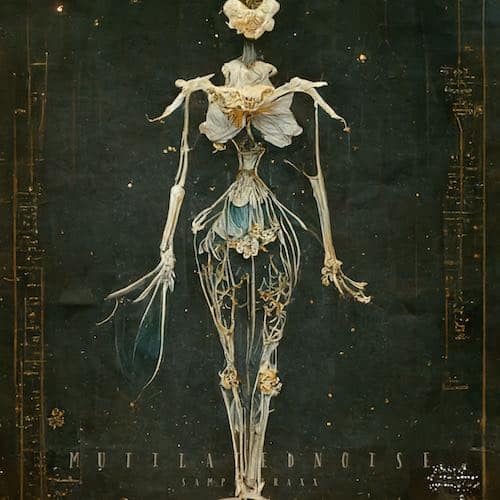
Mutilated Noise is the latest cutting-edge audio collection from SampleTraxx, specifically designed for creative music and dark sound environments.
This sound library is designed to take your project from simple suspense and tension to the most dramatic and dark moments, pushing the boundaries of what’s possible in audio design.
Why Film Composers Need MUTILATED NOISE by SampleTraxx
In the film industry, sound design and music composition play a critical role in creating a narrative’s emotional landscape. A well-crafted soundtrack can elevate a scene from good to unforgettable. It’s here that MUTILATED NOISE by SampleTraxx comes into play, offering a sound collection meticulously designed for modern, cutting-edge music and ominous sound design.

Elevate Your Sound Design
MUTILATED NOISE is not just another sound library. It’s a comprehensive collection of over 350 disturbing sound effects ready to instill suspense, horror, and tension into your work. The ability to transition from quiet suspense to the most dramatic and dark moments with the help of a single sound library is an invaluable asset for any film composer.
From modern cinematic hits perfect for punctuating key moments and creating rhythm in your soundtrack, to mutilated signals, electric bursts, shockers, and flash for creating jolts of surprise or terror, MUTILATED NOISE offers an extensive palette of sounds.
Furthermore, the inclusion of atmospheric field recordings and musical drones enables composers to build immersive sonic environments. This kind of versatility opens up endless possibilities, making MUTILATED NOISE an essential tool for any film composer.
A Sound for Every Scenario
One of the key strengths of MUTILATED NOISE is its versatility. It’s a sound collection that allows composers to experiment and find the perfect sound for any given scene or scenario.
Whether you need signature hits and cinematic stingers to make an impactful statement, or mutilated alarms, signals, horns to create an eerie sense of danger, MUTILATED NOISE has you covered.

Moreover, unique offerings like morphed vocals and designed bells and cymbals provide a playground of unique sounds to experiment with, allowing composers to create a distinctive soundscape that adds depth and character to their work.
Practical Applications
The applications of MUTILATED NOISE extend beyond traditional film scoring. It’s equally effective in creating tension in thrillers, punctuating cinematic moments in trailers, building atmosphere in video games, and even producing experimental music.
For instance, the Dark Clock Loops or Mutilated Metals can create an eerie and tension-filled sonic environment in a suspenseful scene. Similarly, Radio frequencies and Mutilated Alarms can be used to create unsettling, distorted signals that signify an incoming threat, adding a layer of realism and intrigue to your scenes.
Key Features
- 350+ Disturbing Sound Effects: A comprehensive collection of unnerving sounds to imbue your project with suspense, horror, and tension.
- Modern Cinematic Hits: Perfect for punctuating key moments and creating a rhythm in your soundtrack.
- Mutilated Signals, Electric Bursts, Shockers, and Flash: Unique, disruptive sounds designed to jolt your audience.
- Orchestral Rise and Drop, Clock Loops: Classic sounds with a mutilated twist, ideal for suspenseful moments.
- Atmospheric Field Recordings and Musical Drones: Create an immersive audio environment for your audience.
Whether you are a movie trailer sound designer, video editor, soundtrack composer, or experimental musician, Mutilated Noise offers a versatile collection for creators at every level, from novices to professional composers.
Sounds For Every Scenario
MUTILATED NOISE is an invaluable resource for composers working on a range of audio projects, including:
- Signature Hits and Cinematic Stingers: Make your mark with unique sound signatures.
- Feedback and Resonances: Play with sound textures and reverberations.
- Radio Frequencies: Bring a sense of realism to your scenes.
- Mutilated Alarms, Signals, Horns: Distorted sounds to rattle your audience.
- Morphed Vocals: Experiment with vocal manipulations.
- Dark Clock Loops: Time-related sounds with a sinister twist.
- Mutilated Metals: Harsh, grating, metallic sounds.
- Reverse and Swell: Transition effects that add a touch of suspense.
- Designed Bells and Cymbals: Add a haunting depth to your soundtrack.
- Orchestral Rise and Drop: Dramatic sounds that can underline key moments in your project.
Practical Examples
Regarding sound design and composition, the sonic possibilities are virtually endless with MUTILATED NOISE by SampleTraxx. This versatile library allows users to create a wide array of sounds, spanning from subtly ominous to outright disturbing. To help you grasp this sound collection’s potential, let’s look at some practical usage examples.
Distorted Sounds to Rattle Your Audience
Distorted sounds can be used to rattle your audience.
Distorted sounds are a type of sound design that can be used to create a sense of unease in a person’s mind. When listening to distorted sounds, people may feel disoriented and confused, which can make them feel uncomfortable.
Distorted sounds can be used in a variety of ways: they can be used as background noise in horror films, they can be used to communicate messages in advertising campaigns, or they can be used as part of an experimental musical composition.

When using distorted sounds in your work, it is important to remember that you should use them sparingly—if you use them too much over time, you will become desensitized to their effect on your audience.
Creating Tension in Film
Imagine a suspenseful scene in a thriller or horror movie, where the protagonist is stealthily moving through a dark, dilapidated building. The tension is palpable, and the audience is on the edge of their seats. Here, you could employ the Dark Clock Loops or Mutilated Metals to create a sonic environment that’s both eerie and tension-filled. The unnerving tick-tock of the clock or the metallic creaks could heighten the suspense, hinting at the danger that lurks around every corner.
Punctuating Cinematic Moments
The Signature Hits and Cinematic Stingers are perfect for punctuating key moments in a film or trailer. For example, during a dramatic reveal or a sudden plot twist, a well-placed hit or stinger can amplify the impact of the moment, making it more memorable for the audience.

Building Atmosphere in Video Games
In video games, where immersion is paramount, the Atmospheric Field Recordings and Musical Drones can be used to create a rich, immersive environment. For instance, in a post-apocalyptic game, the distorted, haunting drones could set the tone, making players feel as if they’re truly navigating a world on the brink of collapse.
Disturbing Radio Transmissions
The Radio Frequencies and Mutilated Alarms, Signals, Horns could be used in a variety of scenarios, such as a scene where a character is tuning into a radio transmission filled with unsettling, distorted signals. These sounds could also be used to signify an incoming threat or danger, like an alien invasion or a nuclear meltdown.
Experimental Music Production
For experimental musicians and composers, the Morphed Vocals and Designed Bells and Cymbals provide a playground of unique sounds. These could be used to create a distinctive soundscape or a haunting melody that wouldn’t be out of place in an avant-garde composition.
These examples are merely the tip of the iceberg when it comes to the potential of MUTILATED NOISE. With its wide range of sounds and the flexibility they offer, this collection is an invaluable tool for any composer or sound designer, opening up a world of sonic possibilities.
Atmospheric Field Recordings and Musical Drones
Atmospheric field recordings and musical drones are an integral part of the experimental music production landscape. Field recordings capture the ambiance and nuances of a particular place at a particular time, while musical drones offer a mesmerizing experience of sound as it evolves over time. Together they create an immersive atmosphere that is unique to each artist’s sonic palette.
Conclusion
With MUTILATED NOISE, SampleTraxx has pushed the envelope of sound design, providing an innovative and comprehensive toolbox for audio creators. This library is a must-have for anyone looking to produce modern, compelling soundtracks and sound design.
Film composers need a variety of unique and disturbing sound effects to create suspense, tension, and drama in their soundtracks.
MUTILATED NOISE by SampleTraxx is a comprehensive collection of over 350 unnerving sound effects specifically crafted for cutting-edge music and ominous sound design.
This versatile library offers a broad range of sound possibilities, including modern cinematic hits, mutilated signals, electric bursts, shockers, atmospheric field recordings, designed bells and cymbals, morphed vocals, and more. With its flexibility and wide range of sounds, MUTILATED NOISE is a valuable resource for movie trailer sound designers, video editors, soundtrack composers, experimental musicians, and creators at every level.
Practical examples of its usage include creating tension in film, punctuating cinematic moments, building atmosphere in video games, and experimental music production. Atmospheric field recordings and musical drones also provide an immersive audio environment for your audience.
Final Thoughts
MUTILATED NOISE by SampleTraxx is more than a sound collection. It’s a comprehensive sound design toolkit that pushes the boundaries of what’s possible in audio design. Whether you’re a novice or a professional composer, this library offers a range of sounds that can enhance your work and open up a world of sonic possibilities. In the world of film composition, where the right sound can make all the difference, MUTILATED NOISE is an indispensable resource.
Digital F/X
Beauty retouching video from room.tv
The art of retouching clip from room.tv a Venice, CA based company shows how clips are polished these days.
This clip and the ones on room.tv web site shows a great before and after comparison from the wonderland of retouching. On room’s website you find more fx & design examples of their recent work. room’s mission is to merge editorial, motion graphics, computer animation and sound design into a complete creative experience. room edits commercials, music videos and films, design CG effects and title sequences and more.
room’s team members are:
Jeff Selis (editor), Elisa Bonora (editor), Bill Pollock (online artist/editor), Elad Marish (composer/designer), Brandon Toh (sound designer/mixer), John Musemecki (cgi arist) & Jason Barager (executive producer)
Native Instruments Kontakt
VOCAL AI – Animated Intelligence: The Ultimate Vocal Playground

VOCAL AI – Animated Intelligence by Sample Logic
VOCAL AI – VOCAL AI is an innovative Kontakt instrument that combines human vocal elements, synthesis, and transformative effects to create a unique virtual instrument. It includes voices from different cultures, blended together with a powerful multi-core performance engine for creating music with dynamic dynamics, captivating tones, and diverse textures.
Sample Logic has meticulously captured the essence of various cultures, vocal inflections, tones, and techniques from Asia, Africa, Egypt, Europe, Persia, the United Kingdom, and more.
This stunning combination of traditional symphonic soloists, choirs, and beatbox effects forms the basis of VOCAL AI’s creative animations and cinematic motion, featuring over 450 expertly crafted instruments. With the ability to seamlessly blend classical and contemporary elements, VOCAL AI offers a unique experience that captures the essence of both worlds. Through their innovative techniques, the team at VOCAL AI has also created a rhythmic texture tutorial to help users better understand and utilize the diverse range of sounds and rhythms available in their animations and cinematic motion. This tutorial provides a step-by-step guide to incorporating various rhythmic textures into musical compositions, adding an extra layer of depth and complexity to the overall production.
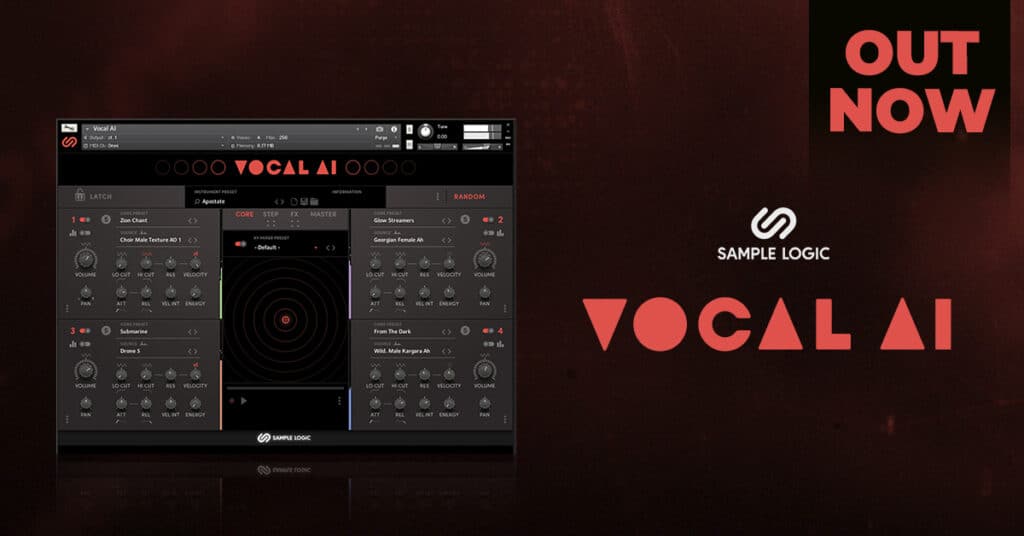
Discover the Power of Vocal AI: A Comprehensive Vocal Instrument with Unlimited Creative Potential
Vocal AI is an innovative and powerful virtual instrument providing unparalleled vocal possibilities for modern music producers and composers. With a massive library of 456 instruments and presets 5.5 GB of sample content. Over 25 multi-sampled vocalists and choirs sourced worldwide, this instrument is designed to inspire and elevate your music productions.
The heart of Vocal AI lies in its advanced quad-core audio engine, which allows for seamless integration of multiple layers of vocals, effects, and synthesis. This is further enhanced by including Step & FX Animators, LFOs, and an XY Core Mixer, all of which contribute to the creation of unlimited motion and unique sonic textures.
Vocal AI’s user experience is designed with efficiency and ease of use. The dynamic tag-based preset browser enables users to quickly navigate the vast collection of sounds, while randomization features encourage experimentation and discovery of new sonic landscapes.
The drag & drop MIDI pattern capabilities allow straightforward integration with your favorite DAW, making it an essential tool for any music production workflow.

One of the standout features of Vocal AI is its hot-swappable effects chain technology. This innovative approach allows users to easily swap, rearrange, and customize the effects chain, creating truly unique and personalized sounds.
Vocal AI is a comprehensive and versatile vocal instrument that offers unlimited creative potential for modern music producers and composers.
Its extensive library of sounds, advanced audio engine, and user-friendly features make it an essential tool for exploring new sonic territories and taking your music productions to the next level.
User Interface: Limitless Vocal
Motion at Your Fingertips VOCAL AI’s user interface offers an intuitive control system for exploring various performance animation possibilities. The tag-based system enables easy presets browsing by genre and theme, while the favorites feature allows quick recall of your preferred settings. The interface also supports the creation of custom 4-core instruments or the selection of ready-made multi-core presets.
Animated Intelligence: Simplicity Meets Creativity
Designed for ease of use, VOCAL AI’s interface features a logical structure and intuitive navigation for efficient preset building and rapid workflows.

The Step Animator allows for unlimited arpeggiator options, bringing life to your projects with exciting sequences and rhythmic flair. The intelligent communication between arpeggiators and performance parameters results in captivating musical narratives with dynamic humanization.
Random Brilliance: Discover the Unexpected
VOCAL AI’s randomizer feature is perfect for those seeking something special when pressed for time. This intelligent tool generates unique sounds, offering endless experimentation possibilities with numerous adjustable parameters, settings, and randomization filters.
The potential for creating custom instruments goes beyond the included presets, providing limitless production possibilities with each use.
Vocal AI: Redefining Sound Design with an Innovative Fusion of Vocals, Synthesis, and Cinematic Expression
The innovative blend of human vocals, synthesis, and morphing effects in Vocal AI is a groundbreaking approach to modern sound design, offering a unique sonic palette that caters to traditional and contemporary music productions.
By incorporating organic vocal recordings from a diverse range of cultures and styles, and fusing them with cutting-edge synthesis techniques, Vocal AI takes vocal-based virtual instruments to new heights. This fusion enriches the timbre of the sounds and unlocks the potential for creating captivating and emotionally charged music that transcends conventional boundaries.
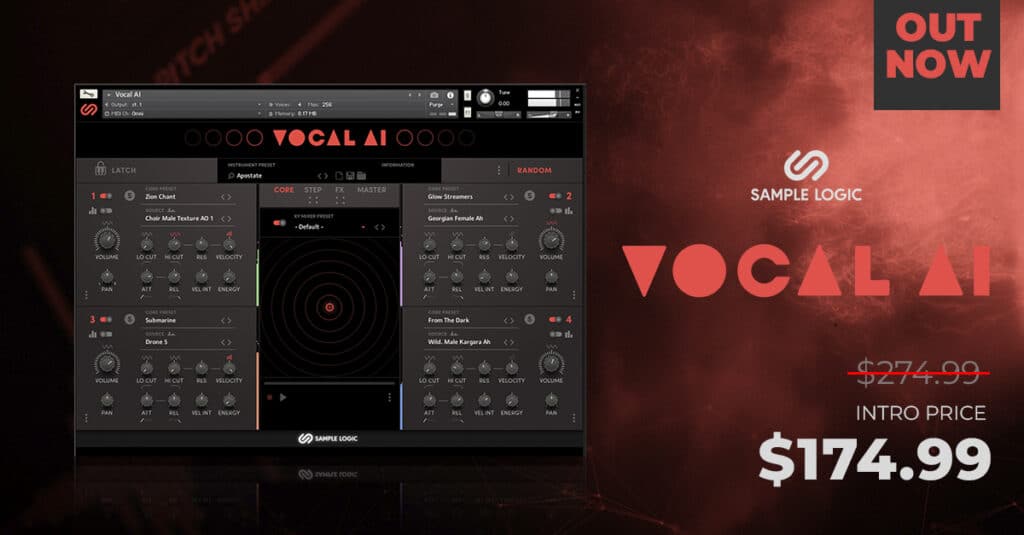
Creative animation and cinematic expression are integral to the Vocal AI experience, providing users with a versatile platform to craft intricate and dynamic sonic landscapes. The powerful quad-core audio engine, Step & FX Animators, and LFOs work harmoniously, breathing life into the instrument and generating rich, multi-layered textures.
By harnessing the vast array of vocal samples, synthesis capabilities, and morphing effects, composers and producers can construct evocative and immersive audio experiences that resonate with their audiences. Vocal AI’s innovative approach to sound design enables creators to explore uncharted territories and redefine how human vocals are utilized in music and audio production.
Explore Limitless Creativity with Vocal AI’s Diverse Instrument Categories for Every Music Production Style
VOCAL AI, offers various instrument categories, allowing users to create various moods, textures, and styles in their music production. Categories such as Airy, Ambient-Ethereal, and Pads provide atmospheric and spacious sounds, while Bass, Beat Box, and Percussive cater to rhythmic and groove-based elements. Including Male, Female, Alto, Tenor, and Soprano vocals ensure a comprehensive range of vocal timbres and expressions.

For more experimental and avant-garde compositions, categories like Dissonant, Experimental, and Sound Design offer unique and unconventional sonic possibilities. Additionally, the instrument features various motion-based categories, such as Fast Motion and Slow Motion, enabling dynamic and evolving soundscapes.
With many types like Warm-Rich, Synth-Electronic, and Wild-Stutter, VOCAL AI, ensures that composers and producers can access a vast and versatile sonic palette catering to every creative need.
Composing with Vocal AI
Composing with Vocal AI is an exciting and intuitive experience, especially when using the powerful randomizer feature. This innovative tool is perfect for those moments when you’re searching for something unique or when time is of the essence.
The randomizer generates fresh, unparalleled sounds on-the-fly, breathing new life into your creative process and often producing unexpected, delightful results.
Unleash Your Creativity with Vocal AI’s Powerful Randomizer: A Gateway to Unique and Captivating Compositions
To get started, engage the randomizer and let it work its magic. With numerous adjustable parameters, settings, and over a dozen randomization filters, the possibilities for experimentation are virtually endless. As a result, you’ll be presented with trillions of potential sound combinations and personalized custom instruments that go beyond the extensive collection of presets already included in Vocal AI.

The randomizer is an excellent way to break free from creative block or discover new sonic ideas you may not have thought otherwise.
Each attempt with the randomizer presents a new opportunity for limitless production possibilities, allowing you to craft truly unique and captivating compositions. Whether you’re a seasoned composer or just starting, the Vocal AI randomizer is an invaluable tool that unlocks a world of unbounded creativity, ensuring that your music always stands out.
Exploring the Art of Sound Design: Unleashing Creativity and Shaping Immersive Audio Experiences
Sound design is a critical aspect of music production, film, gaming, and other forms of multimedia, involving the creation, manipulation, and shaping of audio elements to craft a unique sonic experience. Sound designers use various techniques, tools, and technologies to evoke emotions, build atmosphere, and complement a project’s visual or narrative aspects.
From subtle ambiances to impactful sound effects, the art of sound design has the power to immerse audiences and enhance storytelling in profound ways.

One of the key components of sound design is the synthesis and processing of audio elements. This includes synthesizers, samplers, and other virtual or hardware instruments to generate or modify new sounds. Sound designers may also employ effects, such as reverb, delay, modulation, and distortion, to further shape the tonality and character of the sounds they create.
Another crucial aspect of sound design is the arrangement and layering of audio elements to form cohesive soundscapes. This involves carefully selecting, editing, and positioning sounds in the mix to create depth, dimension, and a sense of space.
Sound designers must possess a keen understanding of audio frequencies and dynamics and an ability to manipulate these elements to achieve the desired outcome creatively.
In addition to technical knowledge and expertise, sound designers must also have a strong sense of creativity and imagination. They are often tasked with inventing new and unconventional sounds that evoke specific emotions or atmospheres, pushing the boundaries of what is possible with audio.
Collaboration with other creative professionals, such as composers, directors, and game developers, is also essential in ensuring that the sonic elements of a project align with its overall vision and aesthetic.
Overall, sound design plays a pivotal role in the success of any multimedia project, shaping the way audiences perceive and engage with the content.
As the field continues to evolve with advancements in technology and innovative tools like Vocal AI, sound designers are presented with even greater opportunities to explore the limitless possibilities of audio and create truly immersive and captivating experiences.
Dive into the world of sound design with Vocal AI
Dive into sound design with Vocal AI – an innovative Kontakt instrument that revolutionizes how we approach vocals, synthesis, and morphing effects in music production. With hundreds of expertly crafted presets at your fingertips, Vocal AI caters to your every creative need, whether you’re just starting out or an experienced sound designer seeking new inspiration.
The user-friendly interface allows for intuitive control and customization, offering a wealth of performance animation possibilities to enrich any preset. Browse a range of presets using the tag-based system, with options from simple and evolving to intricately sequenced ensembles. Quickly locate the perfect sound for your project, and save your favorites for easy recall later on.
Vocal AI’s powerful quad-core engine and innovative randomizer feature open up limitless creative potential. Craft your unique 4-core instruments by combining individual sources, cores, and step animators, or choose from ready-made multi-core presets to jumpstart your composition.
Explore Vocal AI’s vast sonic landscape and let your imagination run wild in this groundbreaking vocal playground. Whether you’re looking to create classic melodies, immersive soundscapes, or cutting-edge sounds, Vocal AI has you covered.
Conclusion
VOCAL AI, a follow-up to WORLD AI, offers a remarkable blend of organic and modern vocals suitable for scoring or contemporary music production. Praised for its depth and inspiration, this SampleLogic Kontakt library allows users to explore unparalleled vocal possibilities.
Distinctive and unlike any other vocal-based virtual instrument, VOCAL AI has already become an invaluable addition to many composers’ toolboxes. With its ability to take the human voice in unexpected and captivating directions, VOCAL AI is an inspiring and surprising instrument for music creators.
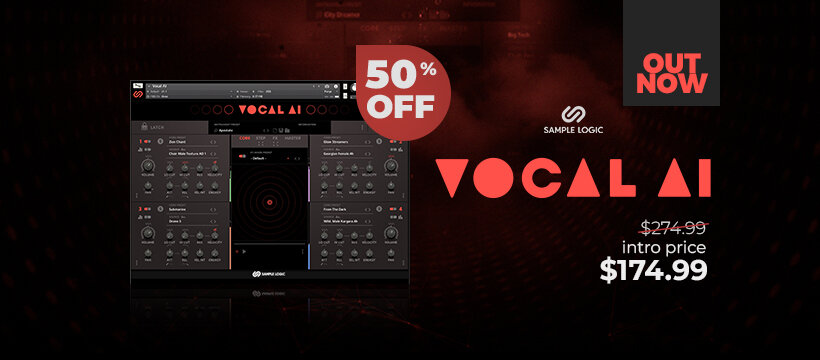
VOCAL AI – Animated Intelligence is a game-changing virtual instrument for Kontakt that elevates your music productions with an innovative fusion of human vocals, synthesis, and morphing effects.
Its intuitive user interface, animated intelligence, and randomizer feature make it an essential tool for composers and producers seeking to create fresh, dynamic, and captivating vocal pieces. Unleash your creativity and let your voice be heard with VOCAL AI – Animated Intelligence.
-

 Microphone5 days ago
Microphone5 days agoUnleash Your Inner Podcaster: Discover the Best Microphone for Crisp, Clear Audio
-

 Composing5 days ago
Composing5 days agoMUTILATED NOISE by SampleTraxx: The Next Generation Sound Collection
-

 Audio Production3 days ago
Audio Production3 days agoUnleashing Sound Therapy: Incorporating Acoustic Design in a Wellness Centre
-

 Singing5 days ago
Singing5 days agoWhat Is Breath Support And Why Is It Important For Singers?
-
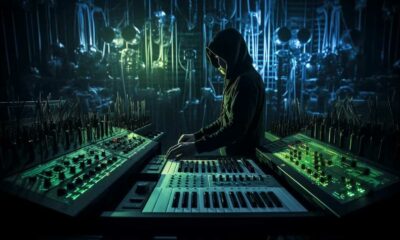
 Ambient3 days ago
Ambient3 days agoUnleashing Eerie Waves: A Guide on Producing Dark Ambient Music
-

 Ambient2 days ago
Ambient2 days agoMastering the Art of Dark Ambient Synthesizer Music
-

 SEO1 day ago
SEO1 day agoHarmonizing Holistic SEO for Musicians: Crafting a Path to Digital Triumph
-

 Ambient3 days ago
Ambient3 days agoUnleash Your Creativity: A Complete Guide to Innovating in Dark Ambient Music













